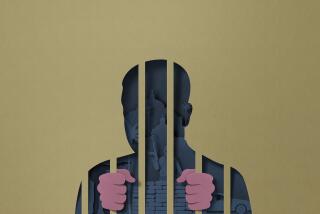A killer shadows an L.A. homeless camp. ‘Some people work for the devil’
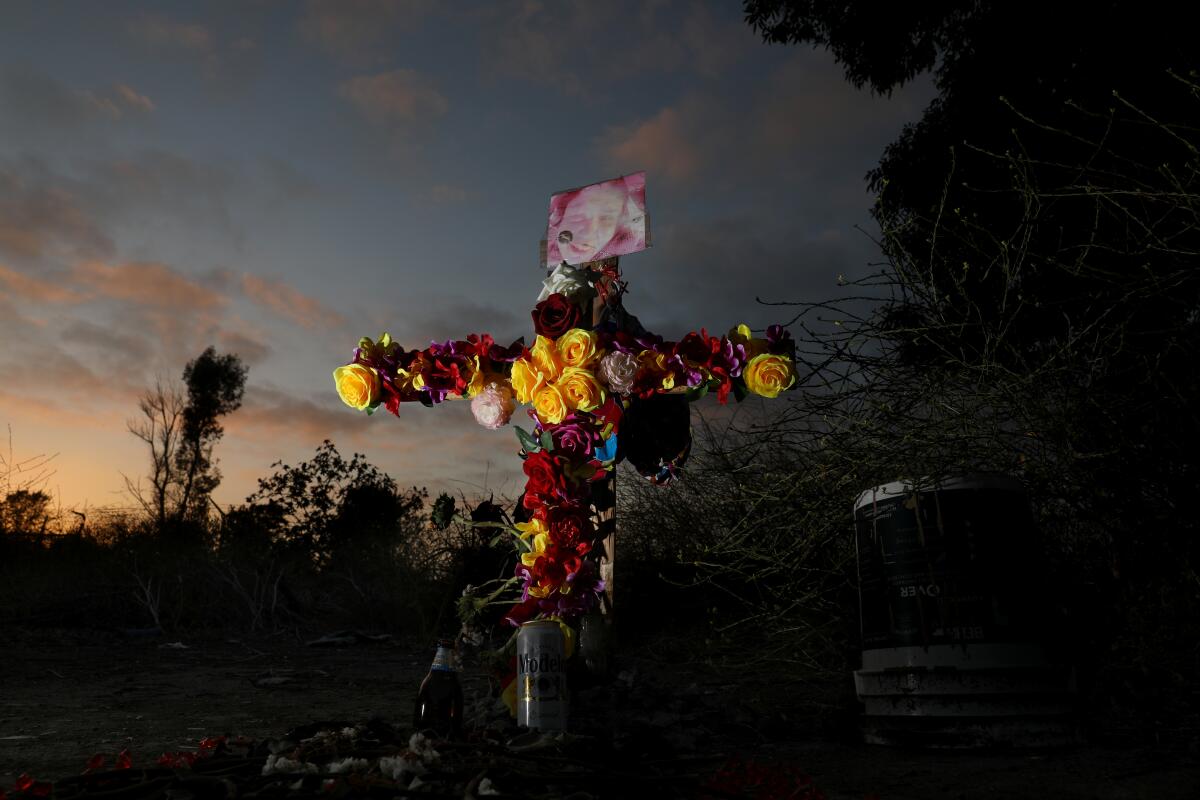
Before the two detectives even sat down, Tracy Walker was talking.
In the interview room at the Carson sheriff’s station, he asked whether the coroner had run tests yet on a knife found in his tent. A man’s body had been discovered a few days earlier near a small homeless encampment where Walker was living. Walker had been arrested on suspicion of killing the man, but he insisted the weapon hadn’t been used in the slaying.
But Daniel Machuca and Gustavo Carrillo, homicide detectives with the Los Angeles County Sheriff’s Department, were there to ask Walker about another body that had been discovered in the same area eight months earlier.
They showed him a photograph of a young Latina with close-cropped hair. Walker knew her. He told the detectives he’d caught the woman in his tent, stealing his belongings, and had given her a “serious response,” according to court records.
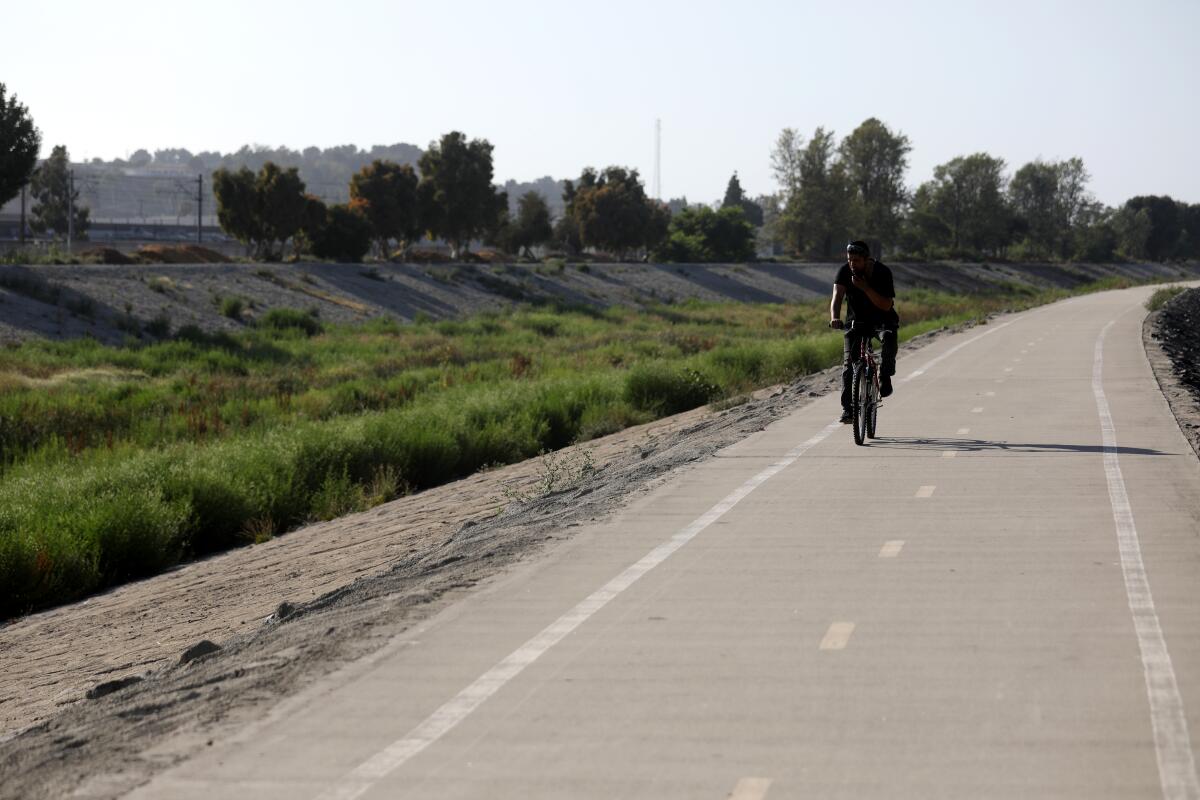
The woman, Walker said, had been the “first one.”
Compton Creek is a concrete-bound ribbon of muddy water that hugs Alameda Street and Santa Fe Avenue in Rancho Dominguez before flowing into the Los Angeles River. It cuts through industrial properties and rail yards — a stripe of green set against an expanse of gray and rust.
It is a quiet place, where the distant clattering of trucks along Del Amo Boulevard sounds muffled and the bike path that hugs the creek is usually empty. But for a small group of people who have pitched tents in the shade of the trees that grow along its eastern bank, the creek is home.
It was here that three people were killed in the last year.
Walker, 56, has pleaded not guilty to three counts of murder and one count of possessing a firearm as a felon. His attorney, Kelly L. O’Brien, said she was still reviewing evidence and declined to comment. Deputy Dist. Atty. Hilary Williams, who is prosecuting the case, declined to comment. The detectives who investigated Walker were not made available for an interview.
Walker’s alleged victims, like him, were among the roughly 65,000 people in Los Angeles County who have no home or exist precariously on the line between housed and unsheltered. Their lives were battered by forces that so often shape stories of homelessness — addiction, mental illness, broken homes — but they never fully gave up on life or on dreams of creating something better.
How each drifted from family and allegedly collided with Walker on a desolate patch of land tells a broader story about the vulnerability that pervades every moment of living on the streets. Amid a startling overall rise in homicides in Los Angeles County over the last year, killings of homeless people have surged most dramatically.
Patricia
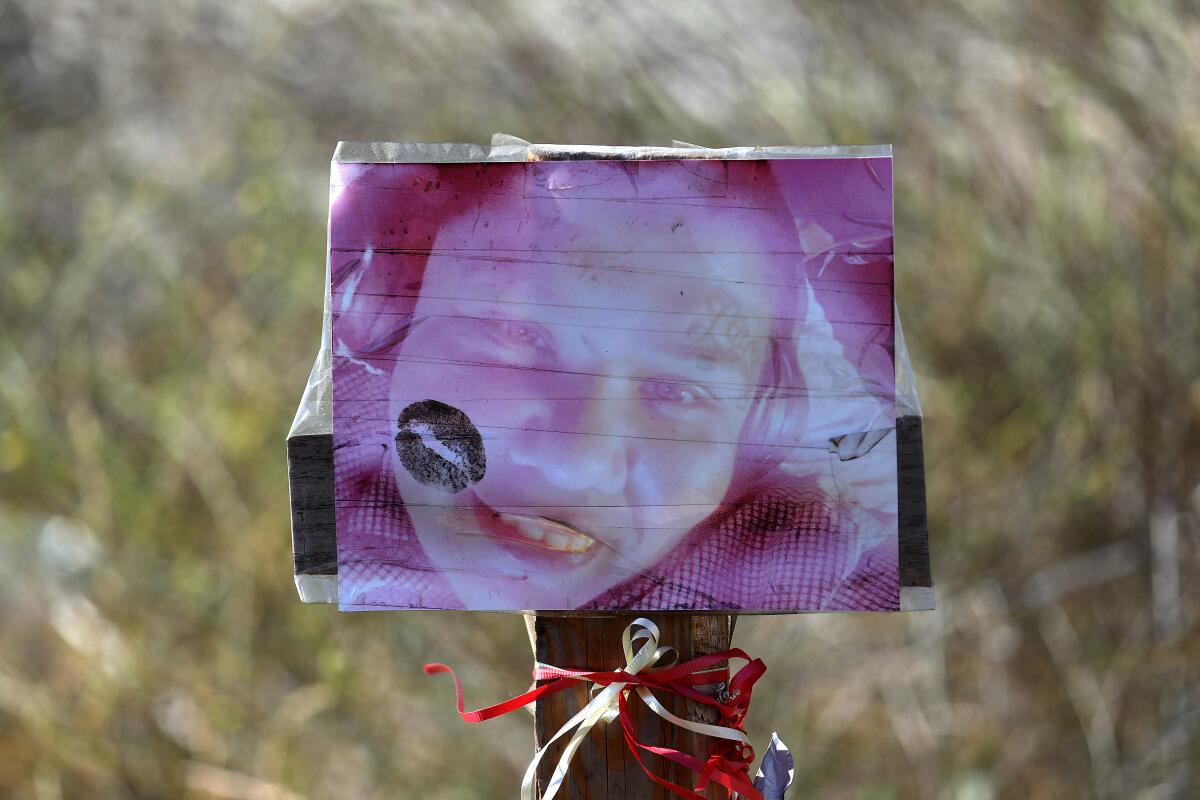
A railroad engineer was walking along tracks near the creek one evening last June when a foul smell coming from a patch of brush stopped him. Past the bushes, in a circular dirt clearing, he found the decomposing body of a woman lying on her back.
Patricia Loeza had been stabbed eight times. Her hands and wrists were marked with cuts, a sign that she’d tried to fend off her attacker. Near her body was a collapsed tent, its fabric slashed and torn.
When Loeza’s family members explain her path into addiction and homelessness, they start at the beginning.
Loeza was 9, growing up with three siblings in South Los Angeles, when their father was deported to Mexico, said her sister, Jasmin Loeza Escudero. It fell on their mother to raise her children alone. Loeza, the youngest of the four, struggled with mental health issues as a child, her sister recalled.
“She had something in her that would make her do things compulsively,” Loeza Escudero said. “Something was not OK with her. Something was off balance.”
Loeza didn’t finish high school; by then, her sister said, she was cycling in and out of juvenile institutions and using drugs, including methamphetamine.
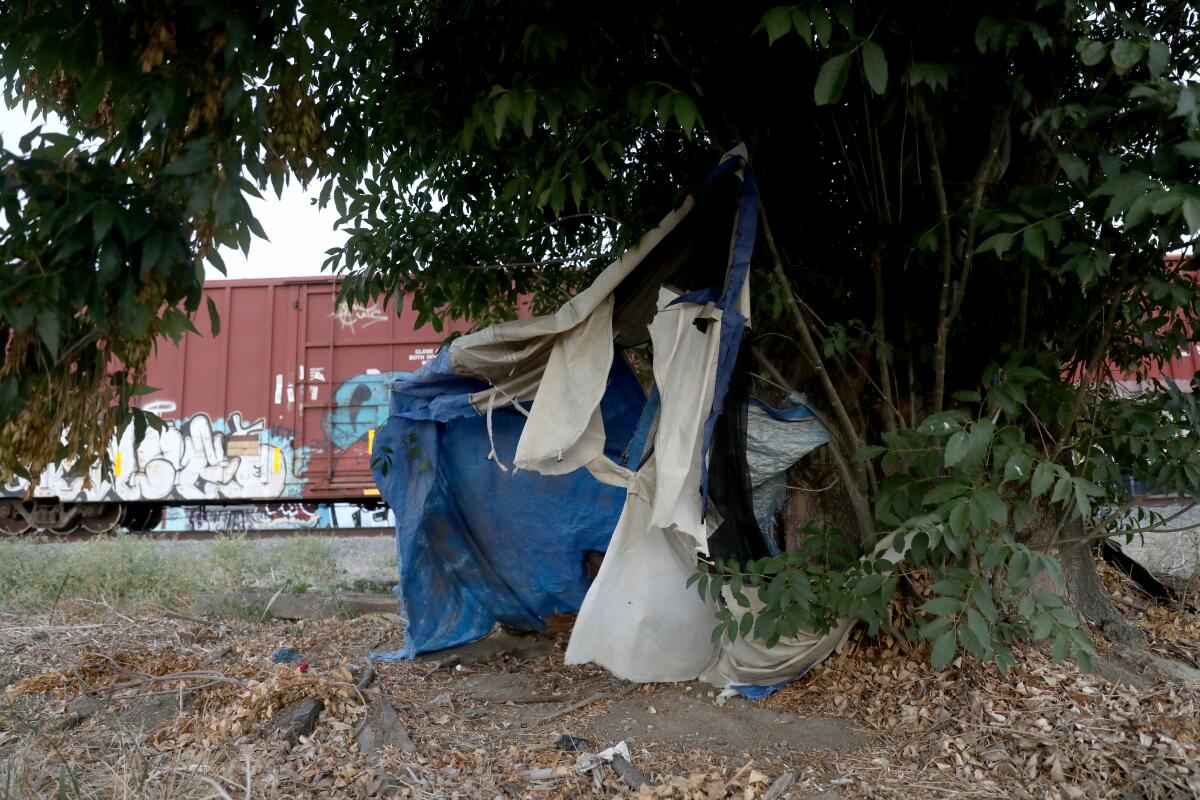
One day, Loeza came home pregnant. She had dated women since coming out as lesbian in middle school, but her mother and siblings never asked about the child’s father. “We didn’t question it,” her sister said. “We just knew we had to take care of her.”
Her baby boy was placed in foster care for a year, until his grandmother was able to take custody of him, Loeza Escudero said.
Loeza, meanwhile, disappeared from her family for longer and longer stretches. One Saturday in 2019, her sister spotted her beneath a bridge in downtown Los Angeles. She pulled over and ran across traffic on Olympic Boulevard. She hadn’t seen her sister in three years. Loeza looked gaunt, ragged, worn down.
Loeza Escudero persuaded her sister to come home and recorded her hugging their mother, hugging and kissing her son, who by then was 4. They pleaded with her to stay, but she refused. Maybe, her sister thinks now, she was embarrassed. Maybe she didn’t want to bring their mother more heartache.
They drove her that day to her tent on Boyle Avenue, just east of the Los Angeles River. They helped her set up a mattress and a small grill they had bought for her, then left.
Machuca and Carrillo, the sheriff’s detectives, got to the tracks just before 11:30 p.m.
They noticed a Minute Maid juice carton near Loeza’s body and, beneath it, two receipts printed about three weeks earlier at a Numero Uno Market in Compton and a Vons in Long Beach.
The next day, Machuca reviewed surveillance video from the Vons. He saw a heavyset Black man place a loaf of bread, meat and a Minute Maid carton on the conveyor belt at the register that had printed the receipt, Machuca wrote in an affidavit seeking a search warrant. The juice carton resembled the one found at the crime scene, he noted.
The man had purchased the items with an EBT card, a debit card that California uses in place of food stamps. Machuca learned the card was registered to Walker, and when he compared the face of the man captured in the store’s video with a booking photograph of Walker from 2011, it was a match, he wrote.
Loeza Escudero, meanwhile, did not know the detectives were following a promising lead. Deciding to take the search into their own hands, Loeza Escudero and her other sister, Vanessa Loeza, canvassed the creek for evidence, for witnesses who might have heard or seen something. In one tent, they found knives, Loeza Escudero recalled. Lots of them.
They called Machuca, who came to meet them. Vanessa Loeza handed the detective a 13-inch kitchen knife, a sharpening file and other items she said she had found inside the tent, which was pitched a few hundred yards south of where her sister’s body was found, Machuca wrote in the affidavit.
As they were talking, a man approached them and said his tent had been vandalized, Machuca wrote. It was Walker.
The Times found few details about Walker’s life beyond what was contained in his criminal case files. His relatives couldn’t be reached for this article.
In 1993, when he was 28, Walker was convicted of manslaughter in Los Angeles and imprisoned through 2001, according to court records and a spokesman for the state corrections department. In 2011, he pleaded guilty to possessing a knife and was given a suspended sentence of three years in an L.A. County jail, according to court records.
A judge ordered Walker to meet with county mental health specialists and to work with them to find housing, the records show. County officials helped him find an apartment in South Los Angeles, a probation officer wrote in a report filed in court. It is unclear how long he remained there or why he left.
Machuca recalled Walker being “extremely upset” at the creek about the damage to his tent. He grew louder and louder, the detective wrote in his affidavit. Walker said he had lived on skid row before moving to the more secluded creek to avoid the police and passersby.
Machuca already knew it, but before he left, the detective asked for Walker’s name.
“They call me Solo,” he said.
It was Patricia Loeza’s photo that Machuca and Carrillo showed Walker eight months later as he sat in an interview room at the sheriff’s station in Carson. The detectives asked how she had died.
Walker claimed to have caught Loeza in his tent and mistook her for a male gang member, Machuca wrote in the affidavit. Walker — who, according to arrest records, stands 6 feet 1 and weighs 360 pounds — said he had to defend himself from the woman, who was 5 feet 2 and 125 pounds.
Her last words, he said, were, “I’ll give you everything I got.”
He told the detectives he had kept Loeza’s cheap cellphone as a “trophy,” stashing it in a storage unit he rented on Del Amo Boulevard, according to the affidavit.
After the interview, Machuca would search the unit and seize an envelope containing six cellphones, an Amazon tablet, a safety deposit key, 50 knives and a “Malcolm X textbook containing handwritten writing,” a search warrant return says.
Machuca and Carrillo showed Walker another photograph. This one was of a young Black man.
“That’s the motherf— I had to defend myself with him,” Walker said, according to the affidavit. “That’s him.”
Kenneth
The last time Keisha Grier saw Kenneth Jones, she tried once more to get him to come home.
To Grier, Jones was one of her own. Her cousin’s son, Jones had grown up with his mother and stepfather in San Diego until the morning he went to school and authorities placed him in foster care, citing domestic violence in his household, Grier said. Jones was 8.
After living in foster homes for two years, he moved in with Grier’s parents in Compton, then with Grier, who became his legal guardian, she said. Though she was already raising three children of her own as a single mother, it was an easy decision, she said.
“He’s family. You don’t throw family away.”
Grier described Jones as an artistic child, recalling that at Compton High School he enrolled in a program that taught drawing and animation skills at Fox Studios in Century City. He dreamed of one day working at such a studio.
“He had so much potential to me,” Grier said.
But he chafed at the rules she set for her household, and in high school, she said, he started using drugs. Jones moved out of Grier’s home and into an abandoned building in Compton with friends, she said. He started shoplifting to support an addiction to methamphetamine and, Grier suspects, heroin.
Over the next few years, he drifted between living on the streets, in a home run by a church and with Grier’s family. In 2019, his girlfriend, Elsa Jimenez, gave birth to his son. The couple were homeless at the time, and the baby was placed in foster care, Grier and Jimenez said.
When he was living on the streets, Jones would come to Grier’s home once every three months or so to eat a good meal and take a bath. “He adapted to that lifestyle, but that wasn’t him,” she said. “He was used to sleeping in a bed. He was used to picking his clothes out of a closet.”
Grier was leaving a CVS on Compton Boulevard one day in November when she spotted Jones riding a bike. They talked for half an hour in the parking lot — about his son, who had turned 1 and was still in foster care, about getting his life to a point at which he could have some involvement with the boy. Grier asked him to come home.
“You are more than what people, this world, has put on you,” she recalled telling him.
Jones said he didn’t want to leave his girlfriend on the streets. Still, Grier sensed she was getting through to him. Usually he’d end a conversation by asking whether she had a few dollars. This time he didn’t.
Grier watched Jones pedal away. “I think he rode off thinking about everything I said.”
The last week of Jones’ life, the tent that he and Jimenez were living in and others in an encampment were destroyed in a fire, Jimenez said. She briefly moved in with family; he pitched a new tent near some railroad tracks north of Compton Creek.
To live on the streets, Jimenez said, is to see a meaner, more treacherous side of life. People will steal what meager belongings another has, assault one another, torch another’s tent.
“It’s an ugly world,” she said, but Jones didn’t seem to look at it that way. “He never watched his back. He thought everyone was good. And I’d tell him, ‘Not everyone’s good, Kenny. Some people work for the devil.’”
A homeless woman found his body Jan. 15, lying face-up on a bank of the creek. Jones, initially identified as “John Doe 22,” had been dead for some time. He had been struck above the brow with something blunt and stabbed in the chest, a coroner’s report says.
Walker told the detectives he had caught Jones inside his tent, trying to steal his bike with a pair of bolt cutters, according to Machuca’s affidavit. As the two struggled, Walker said, he took the bolt cutters from Jones and used them to defend himself, the affidavit says. He told the detectives he had kept the tool in his storage unit.
Walker wanted to see another photograph. He asked whether the detectives had any of the “Eastside Longo.”
Cesar
When Cesar Mazariegos left prison in March 2020, he was 30 and had spent most of his adult life behind bars.
His mother, Celia Mazariegos, recalled him being a jokester of a child. He loved dancing, she said, once winning a Mexican folk dancing competition when he was 8. He would dance along to the music she played as she cleaned the house.
Cesar Mazariegos started using drugs in middle school, his mother said. As he grew older, the abuse deepened. “He couldn’t let go of the drugs,” she said in Spanish.
When he was sober, he was kind and conscientious toward his family. But when he was using, he became erratic and obsessive, she said: “He would do things that weren’t normal.”
Mazariegos cycled in and out of county jail and eventually was sent to state prison to serve a nearly nine-year sentence, his family said. A young daughter knew him only from occasional visits.
He was inked behind bars with tattoos of the Eastside Longos, a Latino gang in Long Beach. He explained them to his mother by saying it was a matter of survival — he had to associate with the gang for protection, she recalled.
After serving his time, Mazariegos was released into a world paralyzed by the COVID-19 pandemic. He’d report to a staffing agency in Rancho Dominguez, near where Compton Creek flows beneath Del Amo Boulevard, and take whatever work he could get, his mother said, usually jobs loading and unloading retail goods at warehouses. He had no fixed address, bouncing among friends’ homes, motels and stints in sober living centers, according to his family.
On Feb. 9, sheriff’s deputies found Mazariegos’ body just east of the creek, wrapped in a nylon tent and covered with two more tents, a piece of carpet and several tumbleweeds, Deputy Jose Ramirez wrote in an affidavit seeking a search warrant. Family members suspect it was a trip to the employment office that brought him there; at the time, he was staying not at the creek but with a friend in Long Beach, they said.
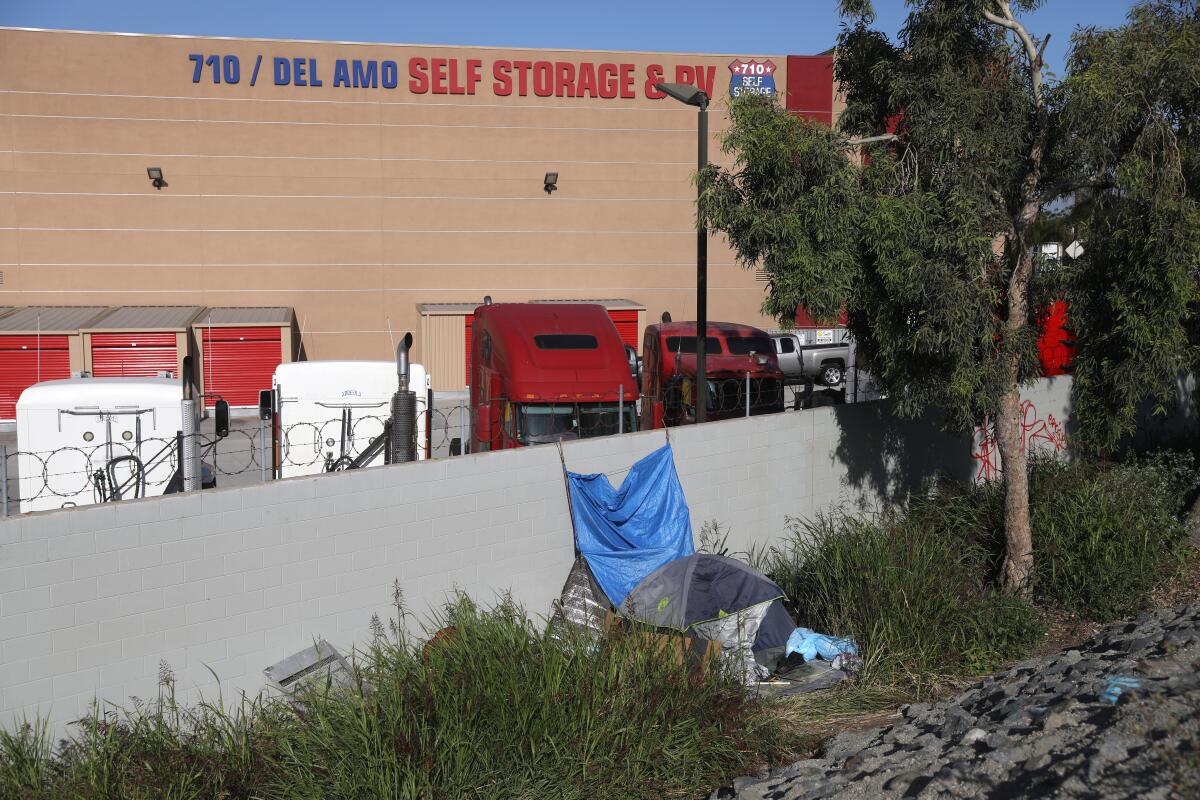
Video from a security camera in the area showed Walker wheeling a dolly with “an odd shaped heavy object on it” from his campsite to the area where Mazariegos’ body was found, wrote Ramirez, who said he recognized Walker in the video from “numerous contacts” while patrolling the creek.
After pushing the dolly behind some trees, Walker stepped back into view with it empty, Ramirez wrote. He returned to the wooded area carrying what appeared in the video to be “a canvas tent, a large section of carpet and several large tumble weeds,” according to Ramirez’s affidavit.
In the interview room, Walker told the detectives that “the third one,” a man with Eastside Longos tattoos, had approached him near the storage facility and drew a gun on him.
Walker said he “went too far” in defending himself, according to Machuca’s affidavit. He had taken the gun from the man, “dealt with him,” then buried the weapon — a TEC-9 — near his tent, the affidavit says.
Walker said he had kept some of the man’s belongings in his storage unit: a black “LB” hat and a blue bandanna, according to the affidavit.
‘Cold-blooded’?
In Machuca’s account, Walker seemed bothered that another detective had called him “a cold-blooded killer.”
“They” — the victims — were “predatory,” he told Machuca and Carrillo, according to the affidavit. He had no choice, he said, but to give “every one of them a serious response to protect his safety as a homeless African American transient.”
Yet he acknowledged, in Machuca’s account, that what he calls self-defense, “the judge will call … PC one-eighty-seven,” the section of the state penal code that defines murder.
The families of his alleged victims look with skepticism on his claims of self-defense. It is more likely, Grier said, he ambushed them as some kind of “game.”
“I wonder if they didn’t catch the guy when they did, how many other people would have been killed,” she said. “He wasn’t going to stop. He was going to keep going and going.”
Times staff writer Ruben Vives contributed to this report.
More to Read
Sign up for Essential California
The most important California stories and recommendations in your inbox every morning.
You may occasionally receive promotional content from the Los Angeles Times.


